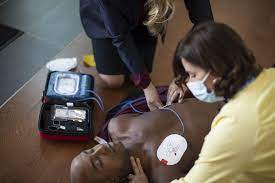Public Access Fully Automatic AEDs are life-saving devices that are designed to be used by anyone in case of sudden cardiac arrest. But what exactly is a Public Access Fully Automatic AED and how does it work?
What is a Public Access Fully Automatic AED?
An AED, or Automated External Defibrillator, is a portable device that delivers an electric shock to the heart to help restore its normal rhythm in the event of sudden cardiac arrest. A Public Access Fully Automatic AED is a type of AED that is designed for use by the general public, including individuals with little to no medical training.
How does it work?
When someone experiences sudden cardiac arrest, time is of the essence. A Public Access Fully Automatic AED is designed to be user-friendly and intuitive, with clear audio and visual instructions to guide the user through the process. The device analyzes the heart rhythm and delivers a shock if necessary to help restore normal heart function.
These devices are typically found in public spaces such as airports, schools, and office buildings, where they can be easily accessed in case of an emergency. Studies have shown that the use of AEDs in public places can significantly increase the chances of survival for someone experiencing sudden cardiac arrest.
Why are they important?
Sudden cardiac arrest can happen to anyone, anywhere, at any time. Having Public Access Fully Automatic AEDs readily available in public spaces can make a life-saving difference in those critical moments before emergency medical services arrive. These devices are designed to be safe, effective, and easy to use, even for individuals with no medical background.
By increasing access to AEDs in public places, we can help save lives and improve outcomes for those who experience sudden cardiac arrest. It is important for communities to be aware of the presence of these devices and to know how to use them in case of an emergency.

